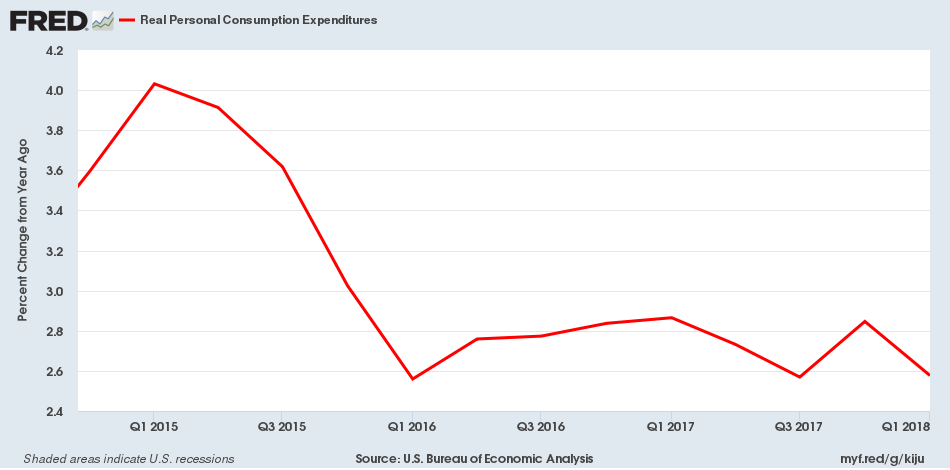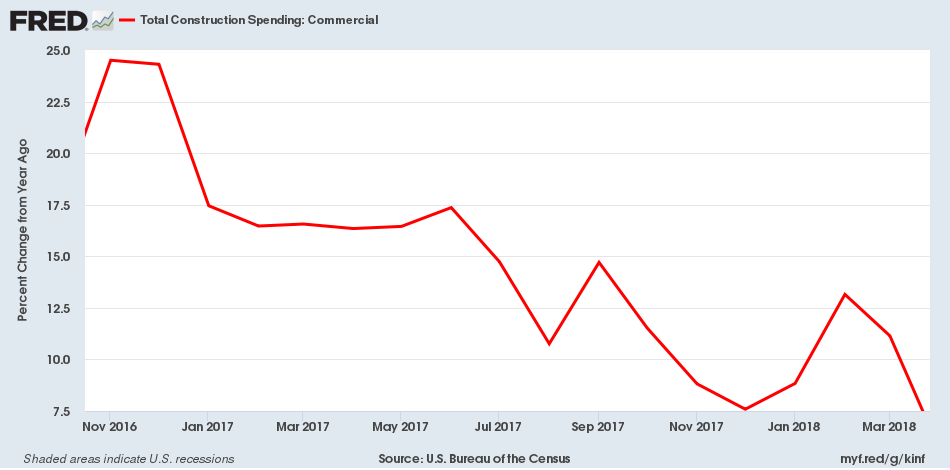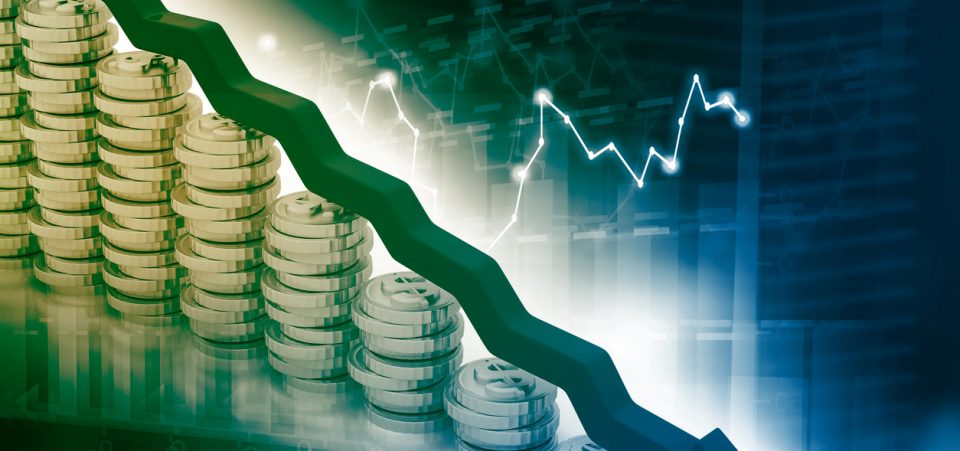Recession Could Be Ahead for the U.S. Economy Sooner Than Anticipated
The U.S. economy could be taking a turn for the worse. A recession could be likely to arrive much sooner than many anticipate.
It must be understood very clearly that a recession happens when consumption tumbles, businesses become pessimistic, and industrial activity slumps.
Unfortunately, we have all of this happening in the U.S. economy.
Consumption Falling Off a Cliff
First, look at consumption; it’s falling off a cliff.
See the chart below. It shows the year-over-year change in quarterly real personal consumption expenditure. Think of personal consumption expenditure as consumer spending.
It’s anemic.

(Source: “Real Personal Consumption Expenditures,” Federal Reserve Bank of St. Louis, last accessed June 28, 2018.)
In early 2015, personal spending was growing at four percent. It’s now around 2.5%.
This is a deceleration of over 37%.
You can’t expect growth in the U.S. economy if consumption statistics are tumbling. Consumption amounts to roughly 70% of U.S. gross domestic product (GDP).
Private Inventories Tumbling
Then look at U.S. businesses. Their actions are speaking louder than words. They are pessimistic and could be fully expecting a recession ahead.
Look at another chart below. It shows the year-over-year percentage change in real private inventories.

(Source: “Real private inventories,” Federal Reserve Bank of St. Louis, last accessed June 28, 2018.)
In 2015, business investors were growing by around four percent. In the first quarter of 2018, inventories grew just 0.8%.
This is a collapse of 80% in the growth rate.
Know that businesses build up inventories when they are optimistic and expect demand—economic growth. If they reduce their inventories, it suggests that they are pessimistic and expect a slowdown.
Mind you, real private inventories have been a great indicator of a recession for the U.S. economy. Whenever they start to decline, a recession follows a few quarters later. This time around, it could be the case as well.
Commercial Construction Growth Falling
Lastly, look at the spending on commercial construction. This is an indicator of industrial activity. If the spending is increasing, it tells us that more offices, factories, warehouses, and other such structures are being built. If not, it tells us that industrial activity is slowing down.
With this, look at the chart below.

(Source: “Total Construction Spending: Commercial,” Federal Reserve Bank of St. Louis, last accessed June 28, 2018.)
Commercial spending has fallen dearly. In late 2016, it was growing at around 25%. Now, the growth rate has tumbled to just around 7.5%.
This is a deceleration of over 70% in commercial construction spending.
U.S. Economic Outlook: Late 2018 and Early 2019 Could Be Really Bad
Going forward, don’t forget that the Federal Reserve is raising interest rates. It could impact consumption, construction spending, and businesses’ ability to build up inventories. So, conditions could get much worse.
I believe that late 2018 and early 2019 may not be good at all. We could be seeing economic data suggesting a recession.
Dear reader, the U.S. economy is already growing at a pace that’s well below expectations.
For example, the Federal Reserve expects the U.S. economy to grow by about 2.8% in 2018. Not too long ago, we learned that, in the first quarter, the economy grew at an annual pace of two percent. That’s 40% below expectation.
Mind you, the mainstream has bought into these expectations as well.
I continue to wonder how investors will take it when they realize that the economy isn’t growing at the pace they thought.
Furthermore, I also wonder what the Federal Reserve will do. It has been raising interest rates because it believed that the U.S. economy was growing. Will it cut its expectations and stop raising rates? This could send waves of uncertainty across the board about the U.S. economy.






